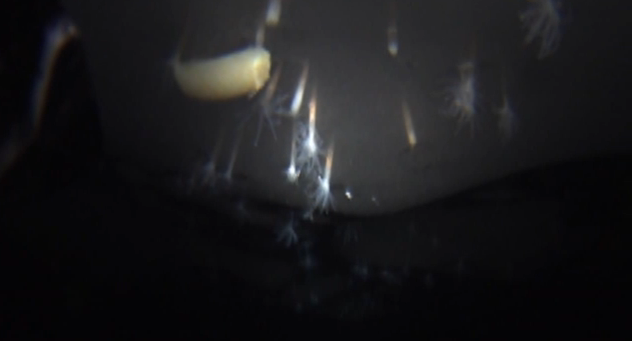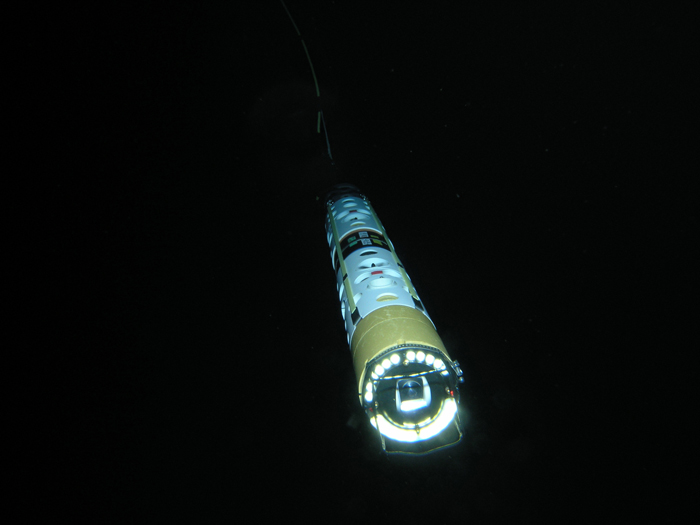Caught on Camera: Ice-Dwelling Sea Anemone

This Research in Action article was provided to LiveScience in partnership with the National Science Foundation.
Whileusing a camera-equipped robot to survey the environment under Antarctica's Ross Ice Shelf, paleoclimate researchers unexpectedly discovered a species of sea anemones that live in the ice.
The team of scientists and engineers, who are part of the National Science Foundation (NSF)-funded Antarctic Geological Drilling (ANDRILL) Program, reported that there were thousands upon thousands of the small anemones.
Though other sea anemones have been found in Antarctica, this species is the first reported ice dweller. While most sea anemones live on or in the seafloor, these anemones live upside down, burrowed in ice, their tentacles protruding into frigid water like flowers from a ceiling.
The white anemones have been named Edwardsiella andrillae, in honor of the ANDRILL Program.
Scott Borg, who heads the Antarctic Sciences Section in NSF's Division of Polar Programs, noted that the discovery illustrates how much remains both unknown and unexplored by scientists, even after more than 50 years of active U.S. research on the southernmost continent.
The discovery was "total serendipity," said Frank Rack, executive director of the ANDRILL Science Management Office at the University of Nebraska-Lincoln. "When we looked up at the bottom of the ice shelf, there they were."
Sign up for the Live Science daily newsletter now
Get the world’s most fascinating discoveries delivered straight to your inbox.
Scientists had lowered the robot — a 4.5-foot cylinder equipped with two cameras — into a hole bored through the 270-meter-thick shelf of ice that extends over 600 miles northward from the grounding zone of the West Antarctic Ice Sheet into the Ross Sea.
Their mission was to provide environmental data for modeling the behavior of the ANDRILL drill string (a length of pipe extending through the water column and into the sea floor through which drilling fluids are circulated and core samples retrieved). They didn't expect to discover organisms in the ice, and surely not a new species.

The anemones measured less than an inch long in their contracted state — though they get three to four times longer in their relaxed state, researchers said. Each features 20 to 24 tentacles, an inner ring of eight longer tentacles and an outer ring of 12 to 16 tentacles.
Many mysteries remain about the creatures, such as how they burrow into hard ice, survive without freezing and how they reproduce. There is no evidence of what they eat, although they likely feed on plankton in the water flowing beneath the ice shelf, researchers said.
In addition to the anemones, the scientists saw fish that swam upside down, the ice shelf serving as the floor of their submarine world, as well as a bizarre little creature they dubbed "the eggroll," a four-inch-long cylinder that seemed to swim using appendages at both ends of its body.
Editor's Note: Any opinions, findings, and conclusions or recommendations expressed in this material are those of the author and do not necessarily reflect the views of the National Science Foundation. See the Research in Action archive.











